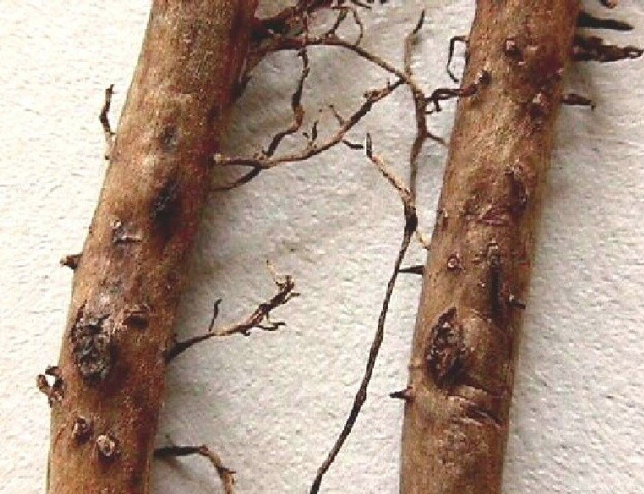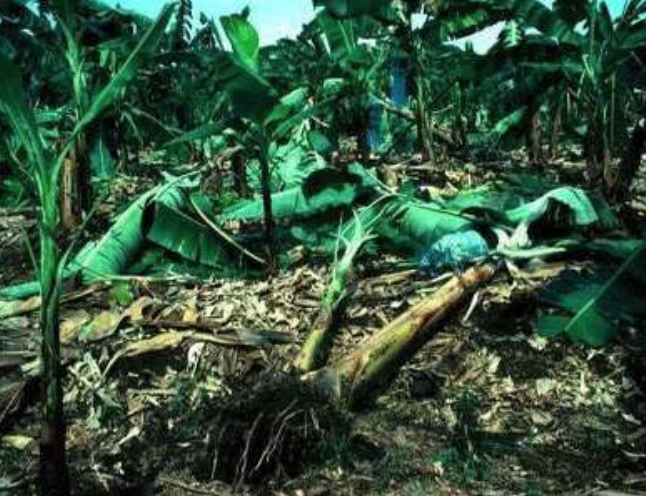Burrowing nematode (Radopholus similis)
Credit: Biovision-Infonet

(c) A. A. Seif, icipe

(c)John Bridge/CAB International. Reproduced from the Crop Protection Compendium, 2005 Edition
The burrowing nematode is the most destructive nematode species attacking bananas. Dark patches or spots on the roots indicate nematode infestation. Severely infected plants may show only stubs of rotted roots and may fall down when the bunch has formed. Bananas are also attacked by other nematode species such as Pratylenchus spp., Helicotylencus spp. and Meloidogyne spp.What to do:
- Remove infested plants
- Use nematode-free planting material
- Plant resistant cultivars
- Biological control is possible by Paecilomyces lilacinus, a fungus, which parasitises the egg, larva and adult of the nematode.
- All nematode species can also be controlled incorporating neem cake powder into the soil near the banana plants. In Uganda neem extracts spread around the banana plant are recommended for control of nematodes (Karubaga and Kimaru, 1999). For more information on Neem click here.